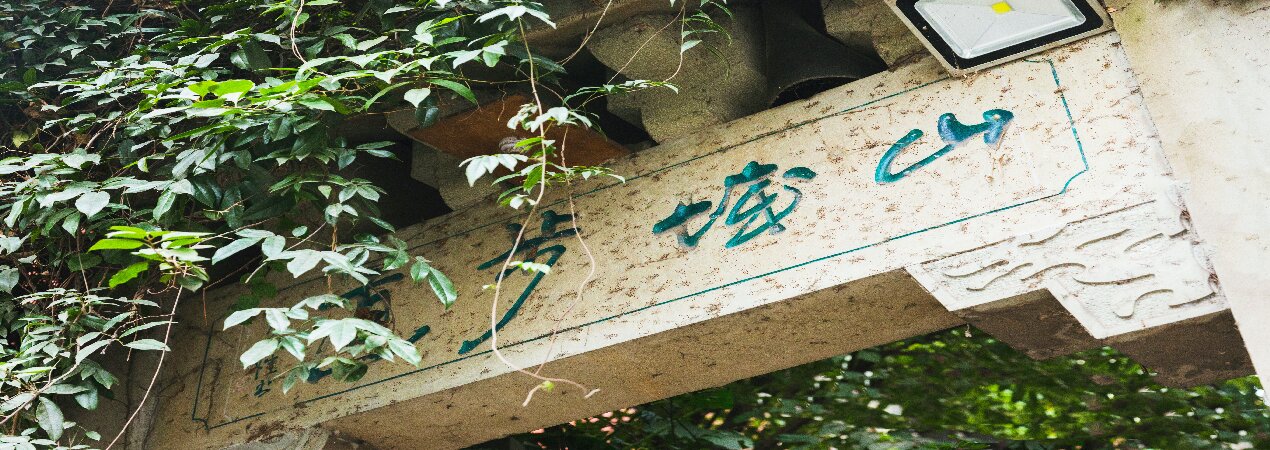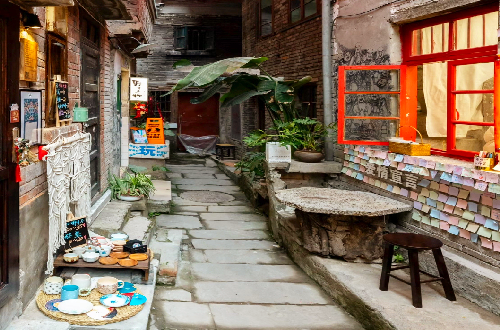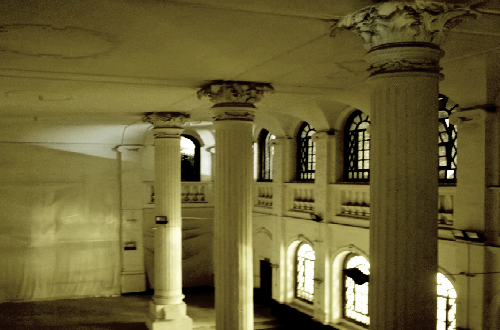Mountain city footpath

There are many footpaths in the urban area of Chongqing, among which the most distinctive one is the Third Footpath of Chongqing. This is the longest historical ancient path with a relatively steep gradient. The Third Mountain City Footpath extends from Guanyinyan, passes through Shibanpo and reaches Zhongxing Road.
Along the way, it connects historical scenic spots that are full of the unique charm of old Chongqing, such as Kangjiantang (the Hall of Resistance and Construction), Bodhi Vajra Pagoda, the Tower of the First Waterworks, the Ancient City Wall, Ren'ai Hall, Houlu Shikumen, and Shancheng Lane.
- Chinese name: 山城步道 shān chéng bù dào
- Suggested time: 2 - 3 hours
- Ticket: Free
- Open hours: Open all day (Some scenic spots along the way may have their own opening hours, generally around 9:00 - 18:00)
- The best time to visit: March - May and September - November. The weather is mild during these periods, suitable for walking. Avoid visiting during extremely hot summer days or rainy seasons when the road may be slippery.
- Address: Along the Yangtze River in Yuzhong District, Chongqing City, China
- How to get there: Take Metro Line 1 and get off at Qixinggang Station. Exit 1 and walk straight for about 200 meters, then turn right at the intersection to find the entrance of the mountain city trail.
Highlights of Mountain city footpath
Mountain City Alley
 A part of Mountain City Alley
A part of Mountain City AlleyMountain City Alley is known as Chongqing's "Architecture Museum". Here, there is an old city wall built in the early Ming Dynasty, foreign consulates and churches constructed during the period when Chongqing was opened as a treaty port at the end of the Qing Dynasty. There are also stilted buildings, quadrangle dwellings, air-raid shelters from the Anti-Japanese War period, as well as Shichaomen buildings in the Shanghai style. Moreover, there are schools and residential houses built at different times after the founding of the People's Republic of China. It is one of the few remaining gathering places of original residential buildings in Chongqing, with an area of more than 20,000 square meters.
Overhanging Plank Road
Leaving Shancheng Lane from the entrance of the plank road, you will step onto the overhanging sightseeing plank road. This antique-style plank road was built more than ten years ago. It is several hundred meters long and can be walked through in about five minutes. Currently, it is the only overhanging plank road built on a cliff in Chongqing.
As a part of the Third Trail, the plank road connects the trails at both ends, forming a complete Third Trail. In this way, it links up historical and cultural heritages such as Kangjiantang (Hall of Resistance and Construction), Bodhi Vajra Pagoda, the former site of the French Ren'ai Hall, and Shancheng Lane.
Ren'ai Hall
 Ren'ai Hall
Ren'ai HallGoing uphill along the residential area, you can see a cluster of castle-like buildings. On the pointed rooftops, a cross can be vaguely seen, adding a bit of mystery and exotic flavor to this alley. This is the Ren'ai Hall, a Catholic church with a history of a hundred years. In the arched windows on the second floor of the church, delicate diamond-shaped wooden lattice window decorations are still preserved, which form an interesting contrast with the vase-shaped railings on the curved windowsills and the Roman column decorations between the windows.
"Ren'ai Hall Hospital" was the first Western-style hospital in Chongqing, making great contributions to the development of Chongqing's medical undertakings. Nowadays, the renovated church still exists, while most of the Ren'ai Hospital, which was mainly in French architectural style in those days, has been demolished. Only the tower standing among the ruins still records the history of that time.
Hiking
Hiking along the Mountain City Trail not only helps with physical fitness but also enables you to learn about the history of Chongqing and the lifestyle of the local people. There are many interesting handicraft stores, teahouses, and characteristic local delicacies of Chongqing along the way. Many tourists who come to Chongqing choose to visit this place. Here is a relatively popular hiking route on the Mountain City Trail: The entrance of the Third Trail at Zhongxing Road -- Shancheng Lane -- Ren'ai Hall -- Overhanging Plank Road -- Yuqiu Stone -- Xinglong Street -- The intersection of the subway station -- Bodhi Vajra Pagoda -- Kangjiantang (Hall of Resistance and Construction) -- Zhongshan Hospital at Guanyinyan.
Drop us a line and we'll connect you with the top China expert in no time!